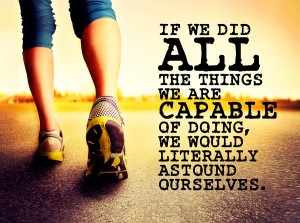Seven Ways to Break Free from Being Too Busy
 When all is said and done: “I wish I had spent more time…”
When all is said and done: “I wish I had spent more time…”
When was the last time you sat in silence and thought deeply? Chances are you’re feeling overwhelmed as you juggle everything in your life. So you write lists and schedule calendars to get everything done. You try to keep the important things front and center, yet as the days and weeks pass, you get sidetracked by the busywork that seems to accomplish a lot, but in reality doesn’t get you closer to your goals. You’ve been sucked back into the vicious cycle of being too busy.
Being “too busy” is a symptom of the much larger condition – that of reacting to situations instead of making good choices. What can get you back on track? More lists? No! You need a solid foundation for change, and practicing mindfulness is a great way to do that. Mindfulness is the antidote to “too busy”.
Let’s examine seven ways you can replace busyness with mindfulness:
- Slow down, concentrate on one task, and be fully present and engaged. For example: How many tabs do you have open in your browser right now? Shut them all down except for one and fully concentrate on the information before you. Or when you converse with someone, give your entire focus to the person and listen closely to what’s said rather than looking around the room or thinking about something else.
- Stimulate creativity by being open to the possibilities. Your brain needs to relax to switch into its creative mode. When you’re “too busy” you’ll dismiss a new idea or opportunity as a distraction. Instead, carefully contemplate if it’s a way for you to grow and advance. If it’s not, dismiss it, or write it down for later consideration, and move on. If it is, spend time with it.
- Set priorities so you can engage in life more efficiently and effectively. Start each day with a review of what you want to accomplish and end each day with what you have accomplished. This will allow you to do the things you really want to do, giving you a sense of satisfaction.
- Build a routine that supports your health and minimizes stress. To live an incredible life, you’ll need to be committed to the wellness of mind, body, and spirit. Some people choose to stay “too busy” so they don’t have to confront or resolve issues in their lives. When you’re mindful, you enhance your ability to perceive what is experienced through your senses rather than building fear and stress over something that isn’t real, only a mistaken notion in your mind. So add one supportive activity to your routine until it becomes your habit.
- Renew motivation by sharpening your vision, the reason why you’re doing what you’re doing. You’ll be able to replace “I can’t” or “Why try?” with “Yes, I know I deserve to make a success of this and I have the resources to do so”. As events unfold, observe the experience instead of always engaging in it. This will increase your emotional stability and vibrancy, as well as, open up to you a full range of options.
- Establish good self-relations so you can think, plan, and dream. Depression and anxiety are signs that something is trying to wake up within a person. By acknowledging the purpose of a symptom, you are in a much better position to seriously reexamine your life and begin the process of living with renewed purpose. Taking time off is essential for recharging your spirit, mind and body. Even when you’re working, be sure to set boundaries and don’t be available all the time. This will help you keep your passion alive and discover your extraordinary purpose for being.
- Become centered through connections. Everyone needs cherished family and friends. Instead of being so focused on doing and accomplishing, mindfulness keeps you centered on being the person you want to be. Your family and friends can help keep events in perspective. At the end of life, no one ever says, “I wish I had spent more time at the office.”
Mindfulness provides access to powerful inner resources so you can change the way you see and ultimately experience each situation. It puts you in a better position to do something different. It empowers you to participate in the world at large, as you work with what arises instead of trying to escape. Is that what you desire? Are you ready to develop a more mindfulness and meaningful life? Please contact me and we can discuss the best way for you to do that.




